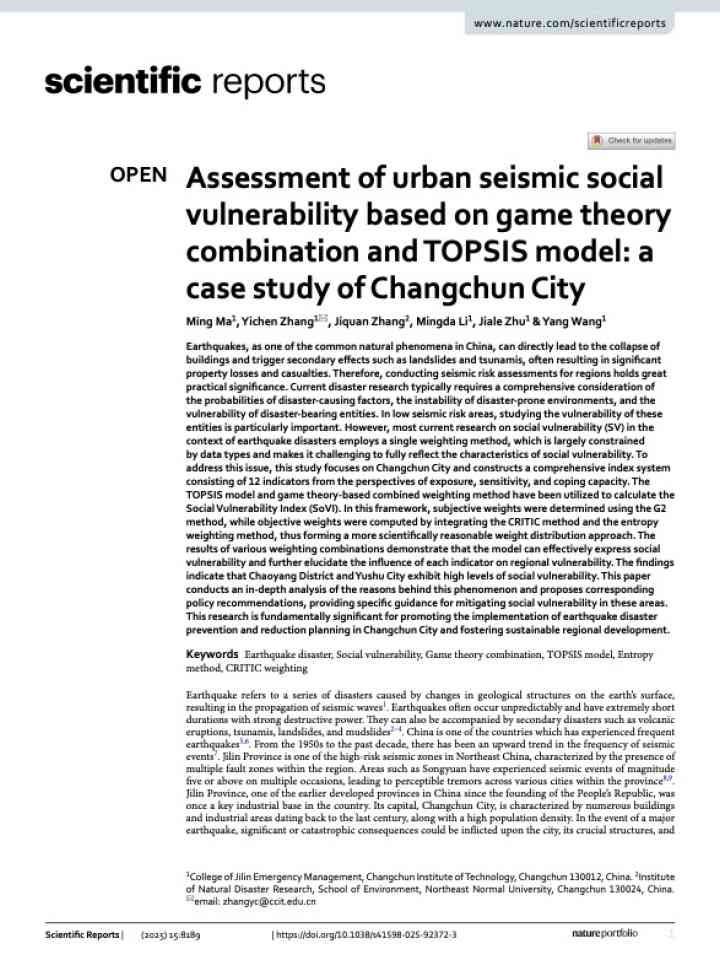Assessment of urban seismic social vulnerability based on game theory combination and TOPSIS model: a case study of Changchun City
The study focuses on assessing urban seismic social vulnerability in Changchun City, China, using a combination of game theory and the TOPSIS model. It constructs a Social Vulnerability Index (SoVI) based on 12 indicators across three dimensions: exposure, sensitivity, and coping capacity. The study applies a combination weighting method, integrating subjective weights from the G2 method and objective weights from the CRITIC and entropy methods. By employing the TOPSIS model, it ranks the vulnerability levels of different regions within Changchun City, providing a more comprehensive and scientifically grounded assessment of seismic vulnerability.
Findings in this study suggest that Chaoyang District and Yushu City exhibit the highest levels of social vulnerability due to factors such as high economic exposure, weak building resilience, and a large population of vulnerable groups. The study highlights the importance of improving emergency preparedness, strengthening infrastructure, and increasing disaster awareness among at-risk populations. The results provide valuable insights for policymakers in disaster prevention and urban planning, ensuring better resilience against potential earthquake disasters.
Explore further
